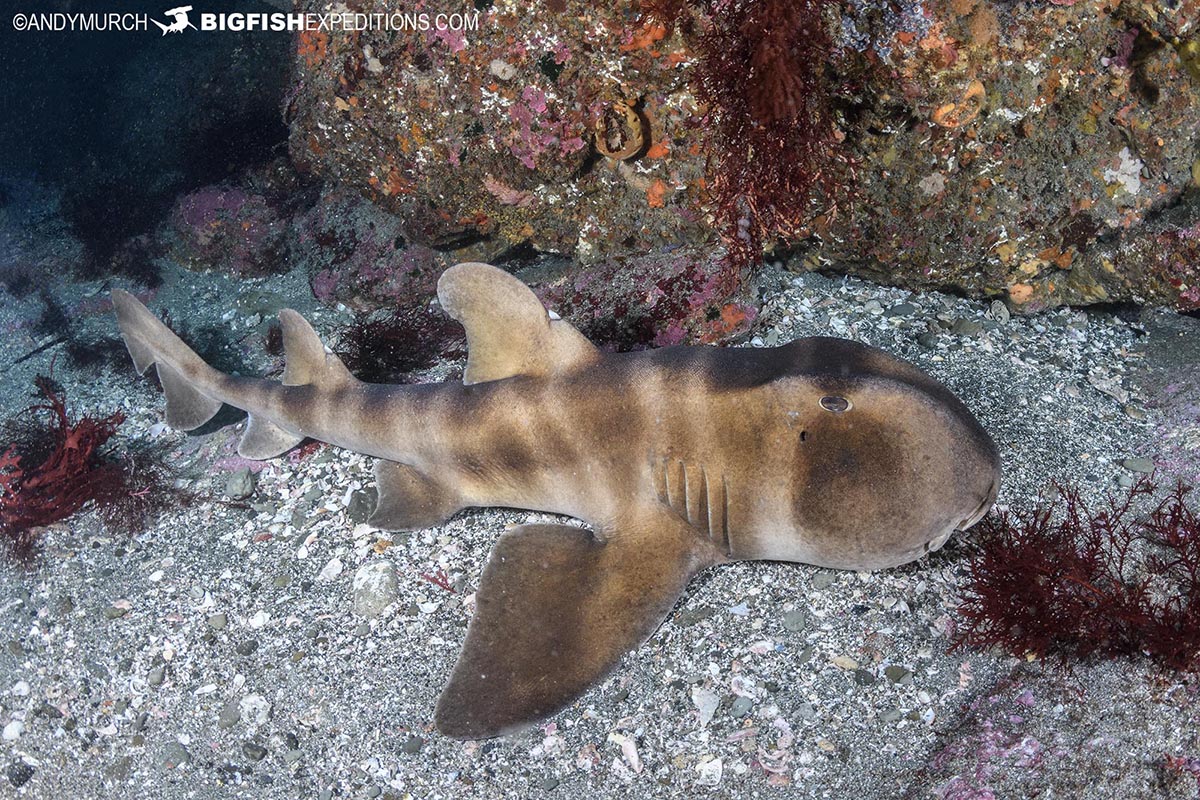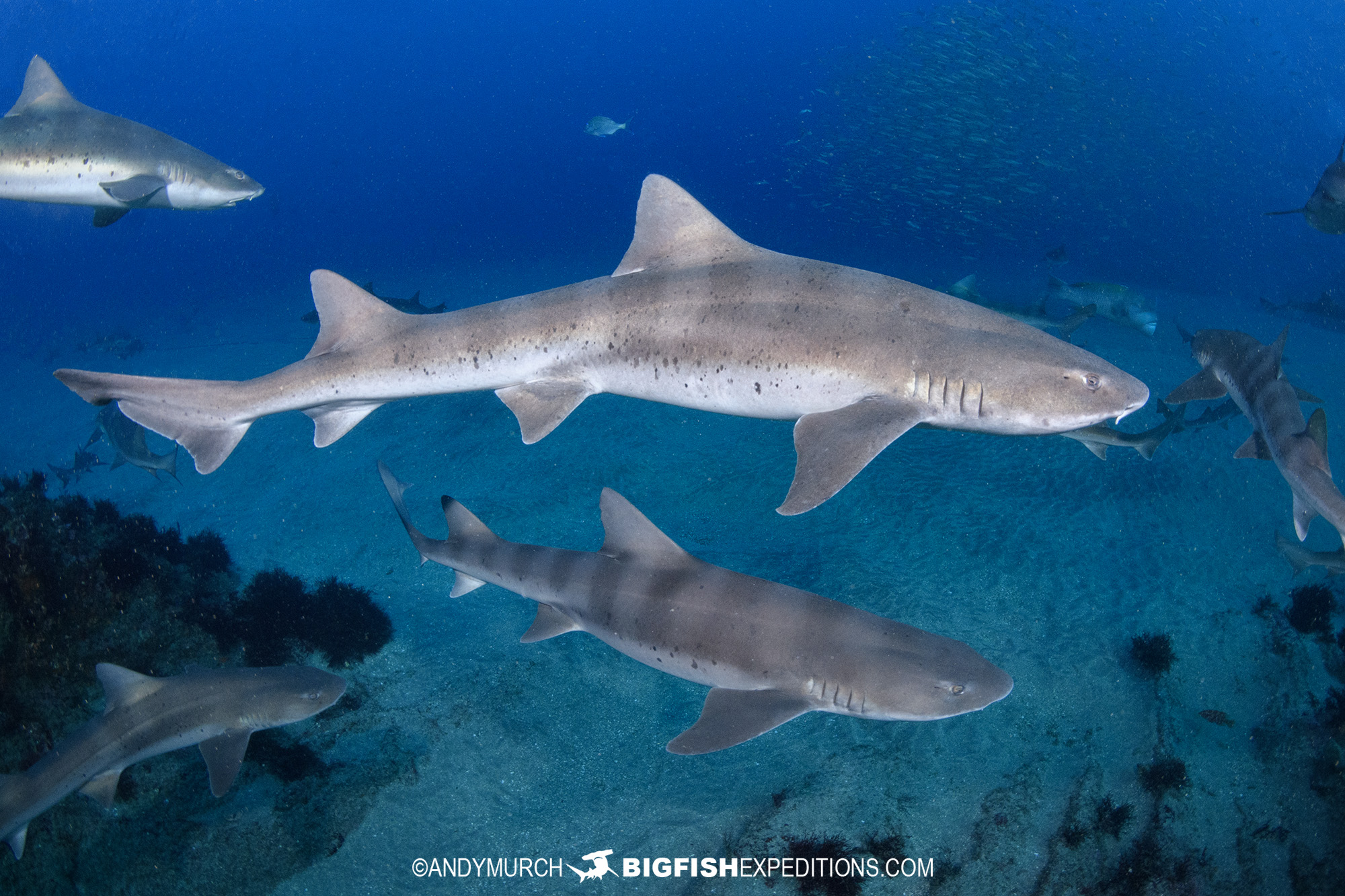
This year’s Japanese Shark Diving Safari was a great adventure with fantastic encounters with eleven shark and ray species during the main trip, plus two more rarely seen shark species on the ‘pre-trip’. As always, the shark and ray diversity in Japan was mind-boggling!
After meeting up in Tokyo, we drove southeast to the Boso Peninsula for three days of epic shark diving before moving to the Izu Peninsula on the west side of Tokyo Bay to finish up the trip.
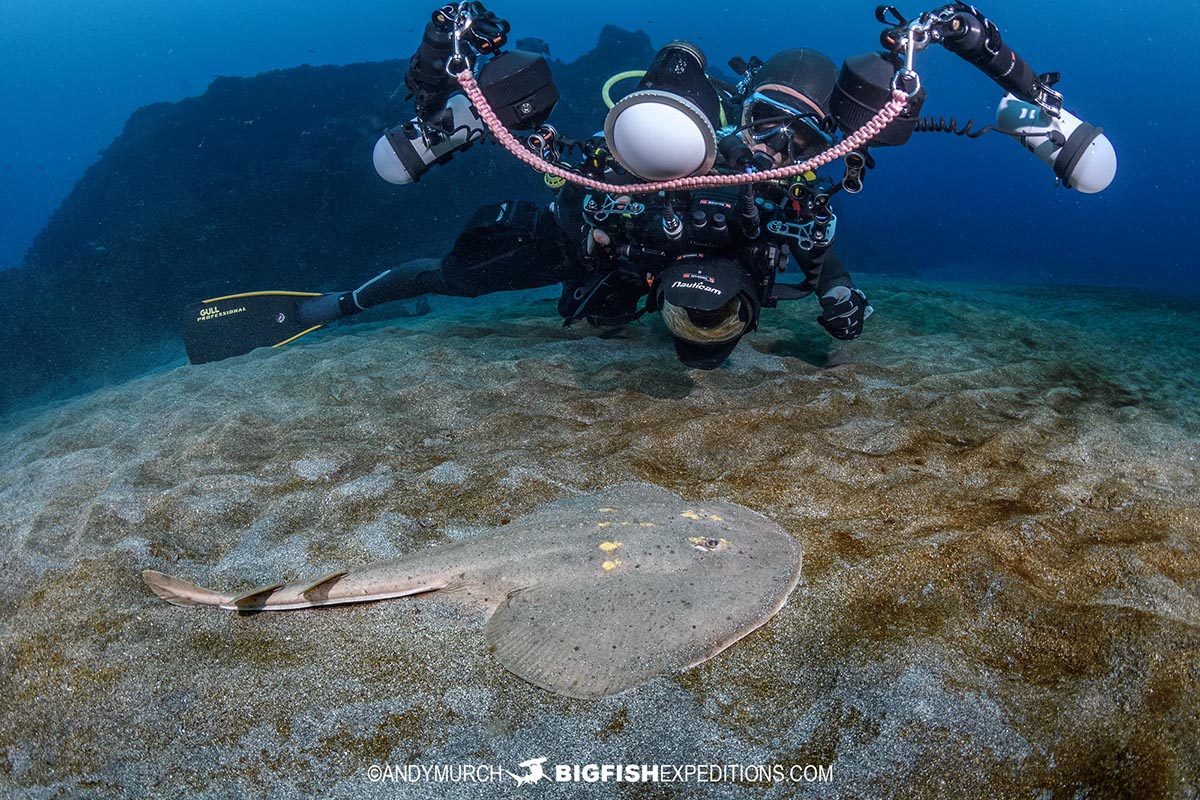
Banded Houndsharks
Elsewhere, banded houndsharks are extremely shy and difficult to approach, but in one particular spot in Chiba, there is a huge aggregation of houndsharks that are habituated to divers. The shark feed in this spot is one of those bucket list dives that every shark fan should do at least once!
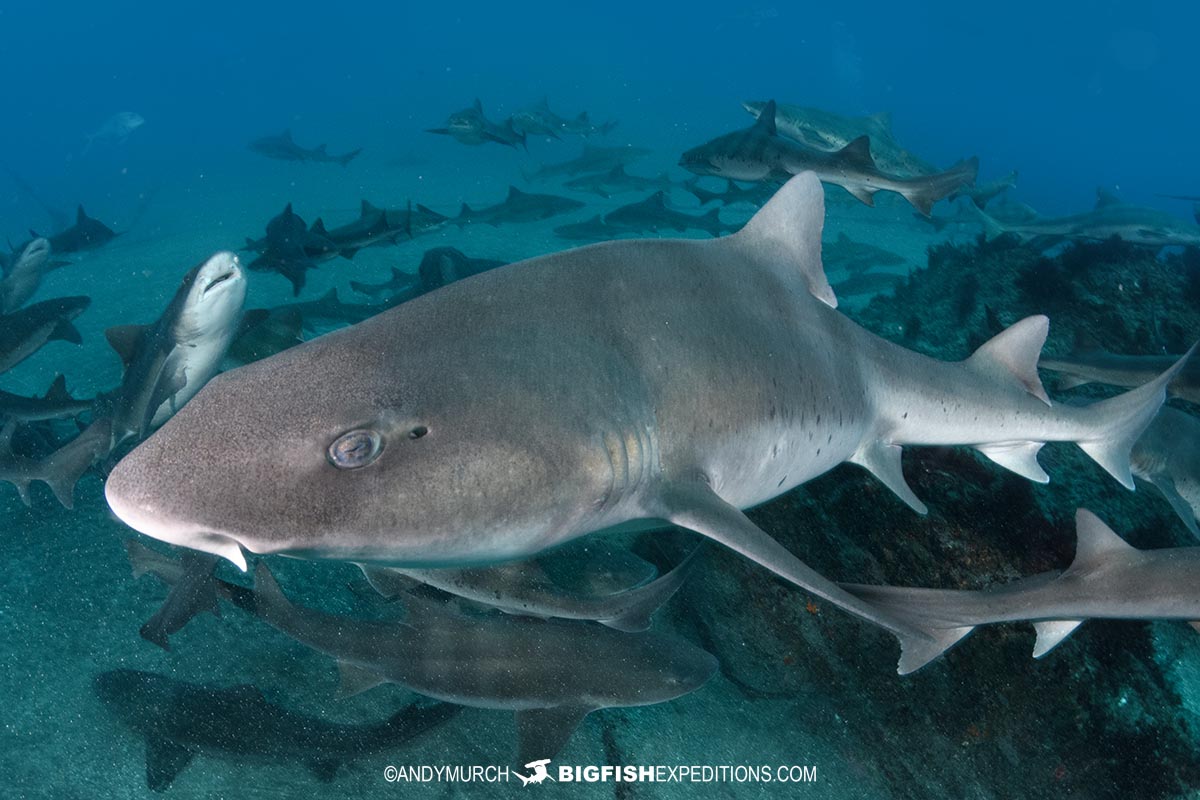
Red Stingrays
Red stingrays are by far the most commonly seen rays on Honshu Island; Japan’s biggest island. During the banded houndshark feed, scores of red stingrays mix in with the swirling houndsharks in the hopes of vacuuming up a few fish scraps before the voracious houndsharks finish them off.
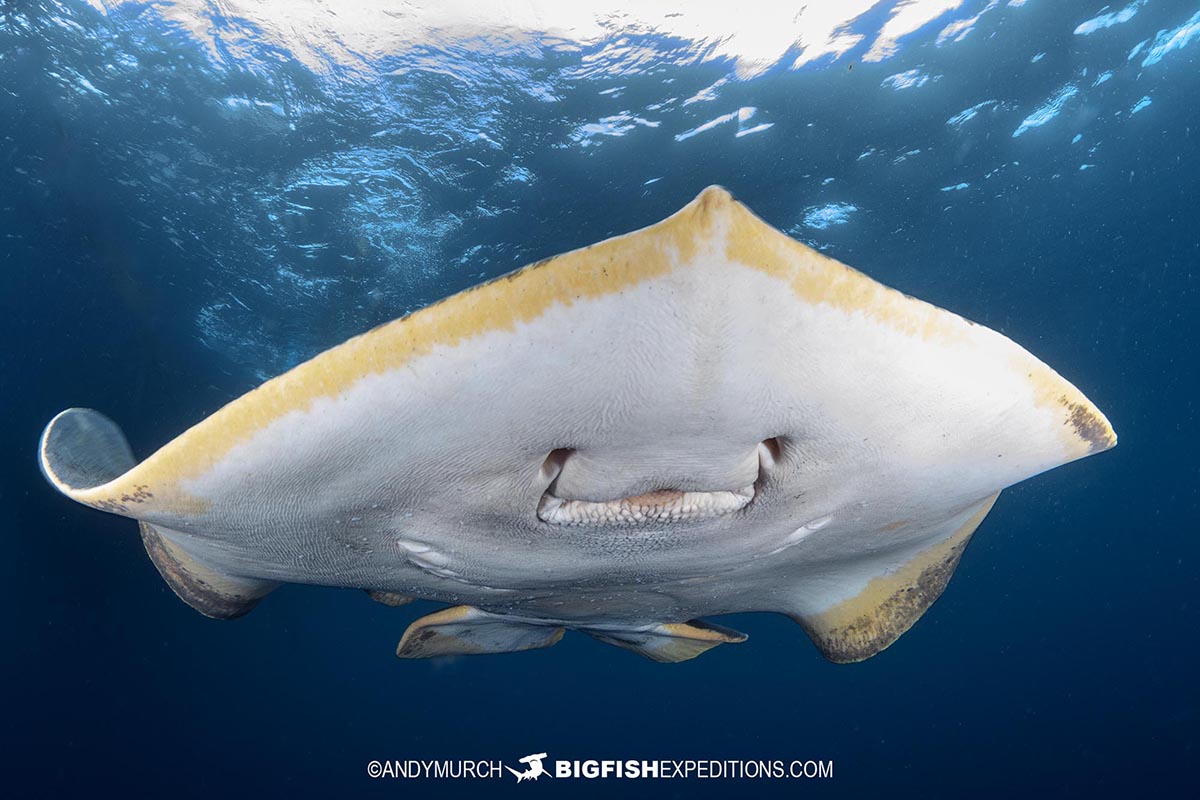
Japanese Horn Sharks
Also called Japanese Bullhead Sharks, these metre long crustacean crunchers can be found hiding under ledges off both peninsulas we visited. Among hornsharks, these ones grow surprisingly large with what seems like disproportionately enormous heads.
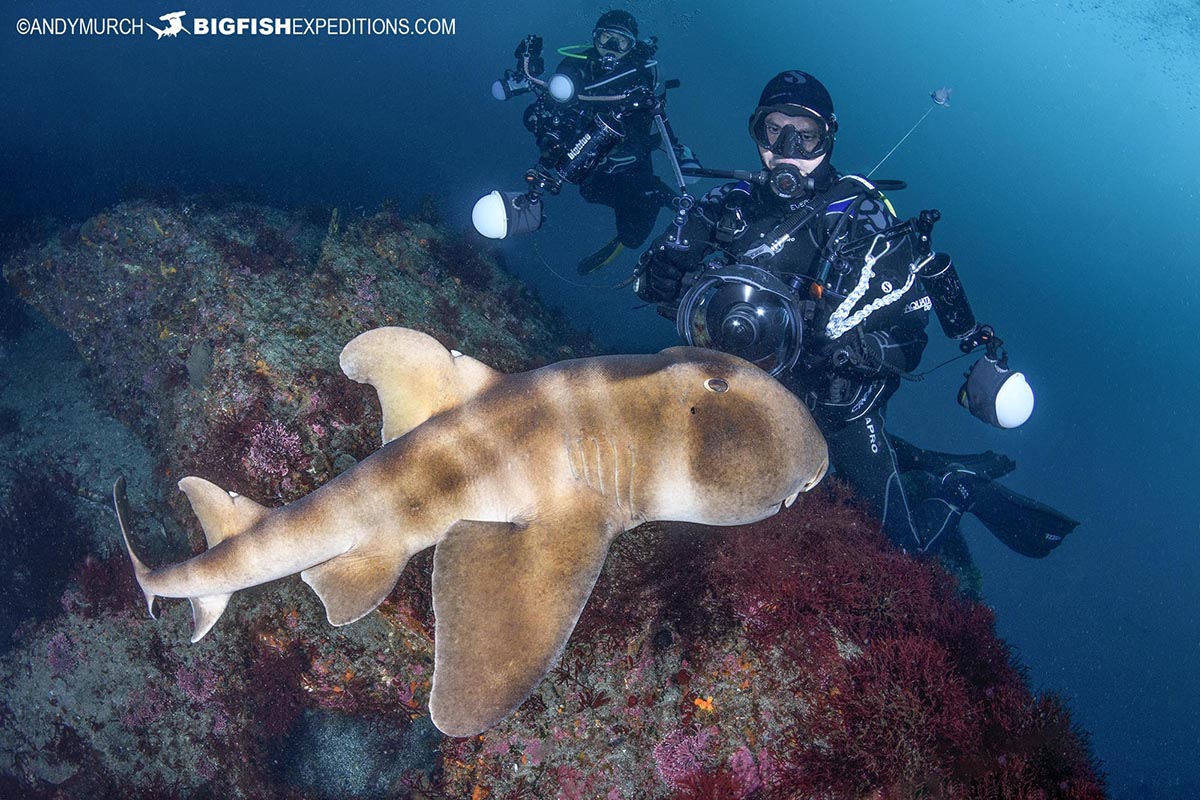
Izu Stingrays
As the name suggest, these rays are more common around the Izu Peninsula than they are in Chiba. At first glance they look a lot like red stingrays but Izu Stingrays have short, bluntly rounded snouts whereas the red stingray’s snout is longer and pointed.
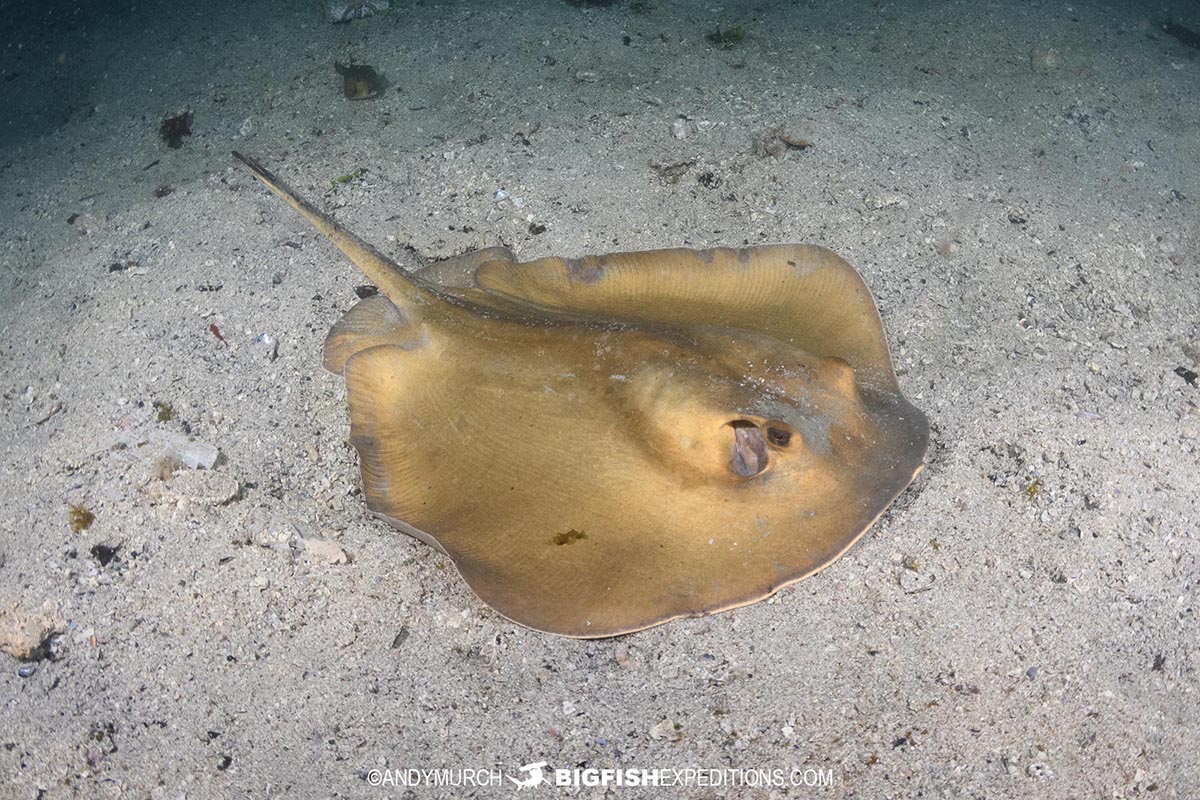
Blotchy Swellsharks
Divers rarely run into blotchy swellsharks on the reef because they live in relatively deep water, but they are often caught accidentally in fishing nets. When we’re in Chiba, the fishermen let us release them on the reef which leads to some interesting photo opportunities!
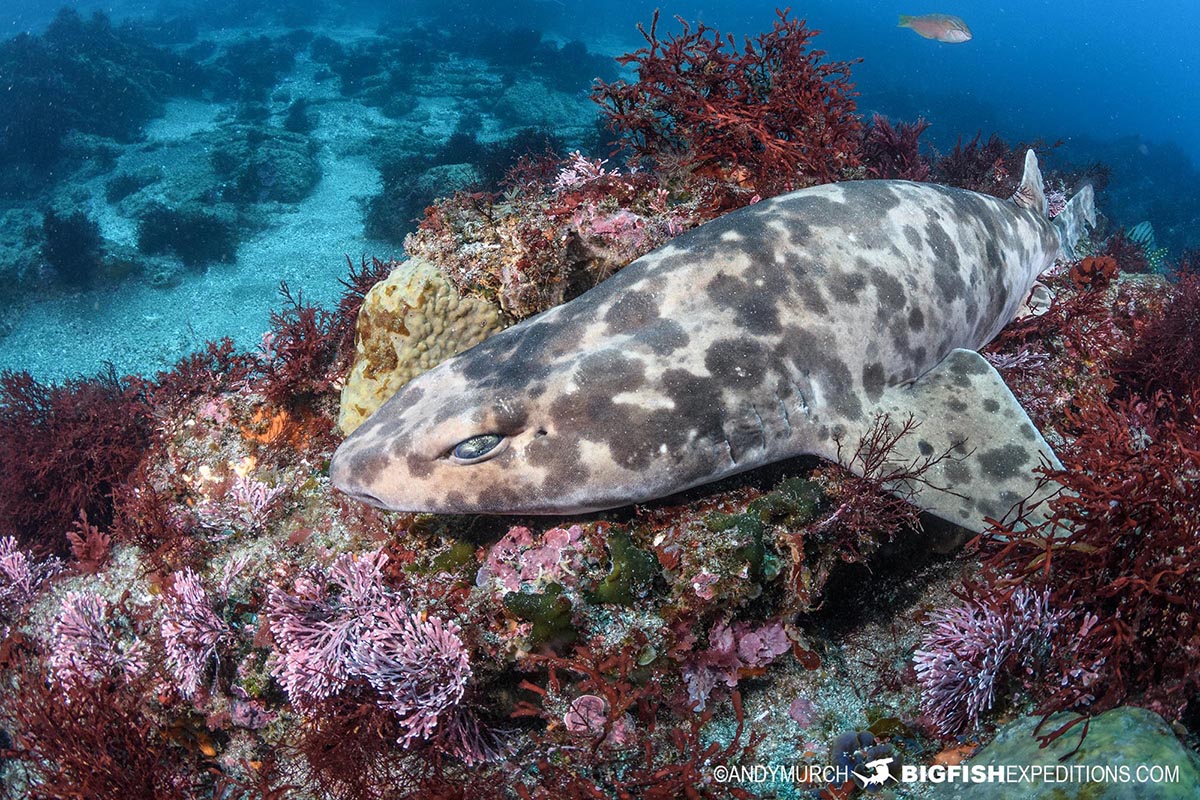
Yellowspotted Fanrays
This is another rarely seen species, but by searching hard we usually find one or two of these bizarre rays hiding under the sand with just their spiracles exposed.
Although they look like guitarfishes, genetically fanrays are more closely related to torpedo rays.
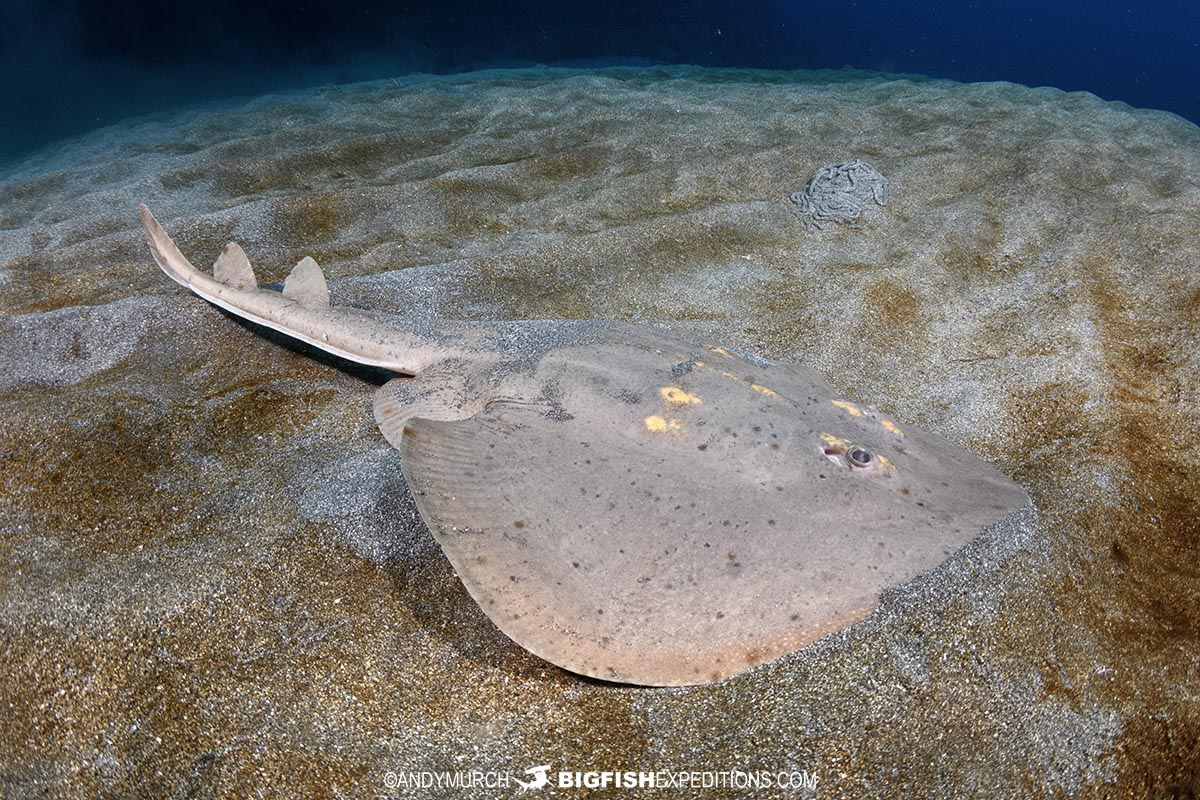
Japanese Butterfly Rays
Watching Japanese butterfly rays taking flight is a sight to behold. After a couple of wing beats they glide seemingly effortlessly like flying carpets a few inches about the sand.
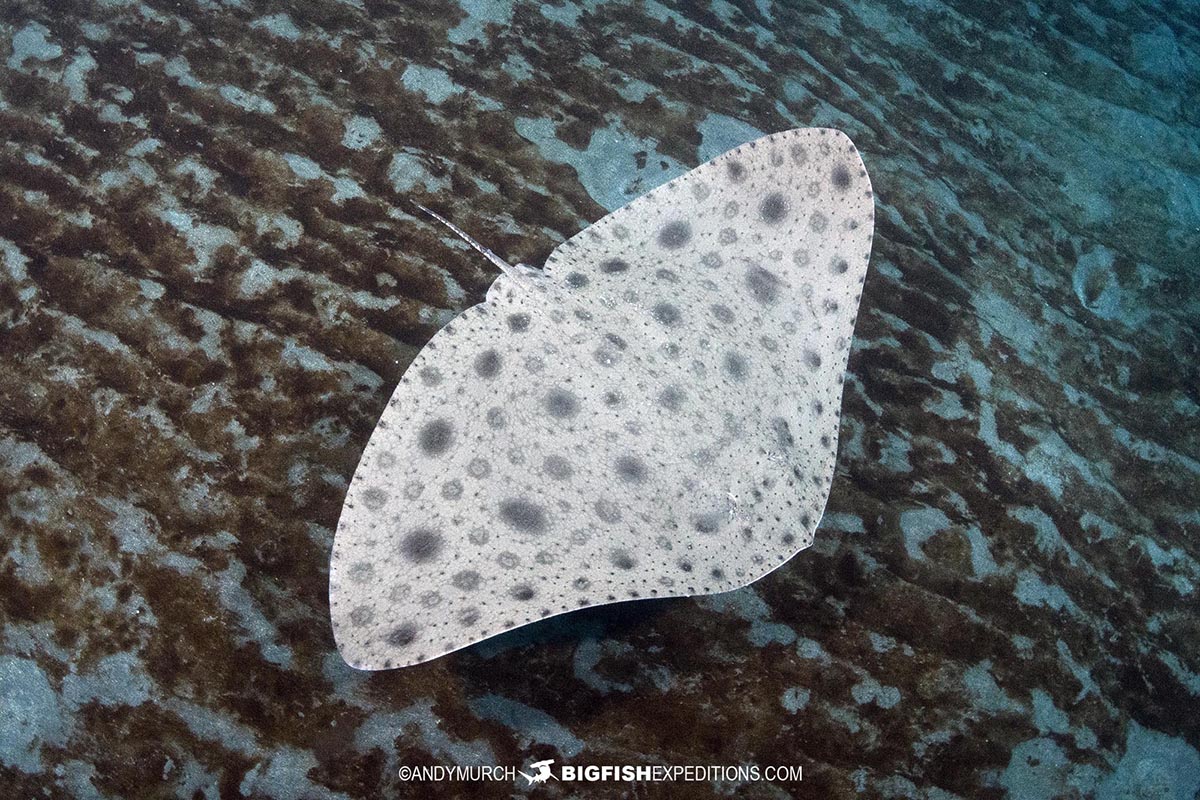
Bottlenose Guitarfish
Knowing where all the interesting elasmobranchs live is an important part of my job. There is a drift dive on the Boso Peninsula, (not far from the houndshark feed) where you can usually spot at least a handful of endemic bottlenose guitarfish. Some can be shy but others will let you cozy right up to them for the money shot.
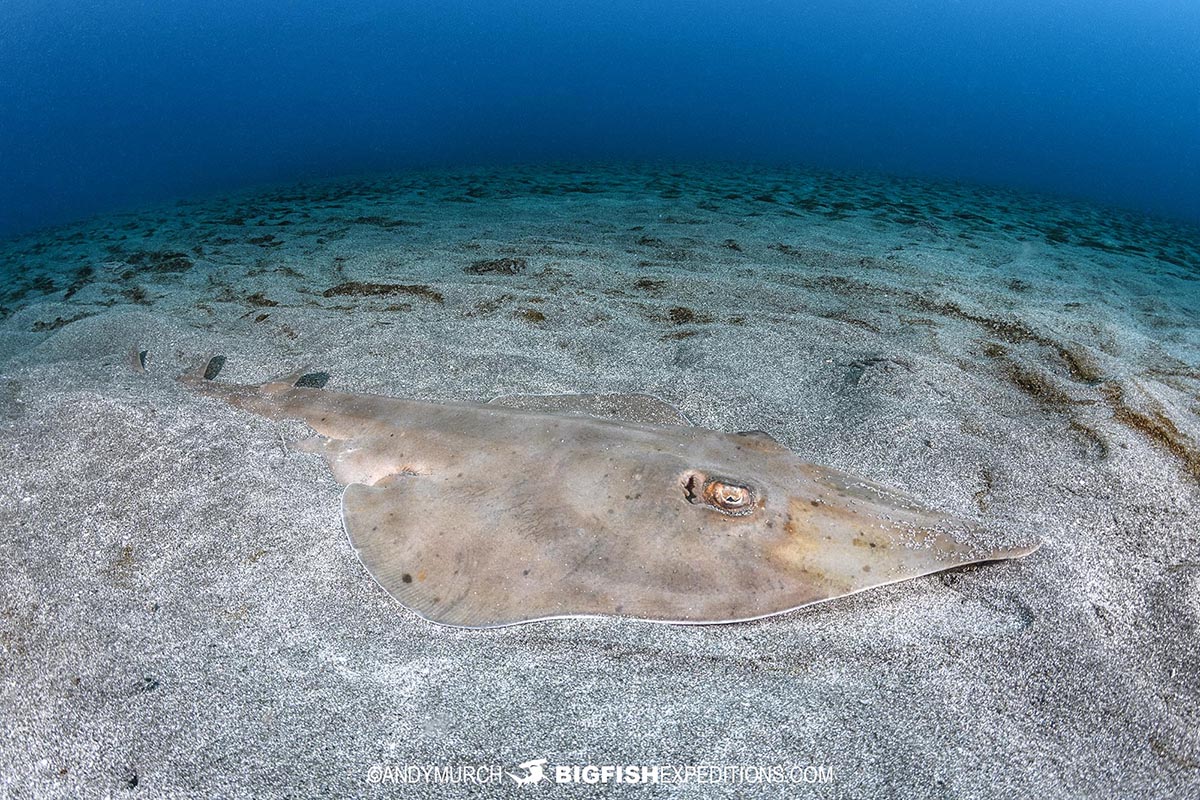
Japanese Eagle Rays
Towards the end of the trip, the weather presented some challenges in the form of wind, but this actually resulted in us diving a new spot with Japanese eagle rays; a species that we have not encountered on previous trips. The following images of the species we encountered were all taken this year, either on the main trip or on the extension, which usually goes to a new exploratory destination each year.
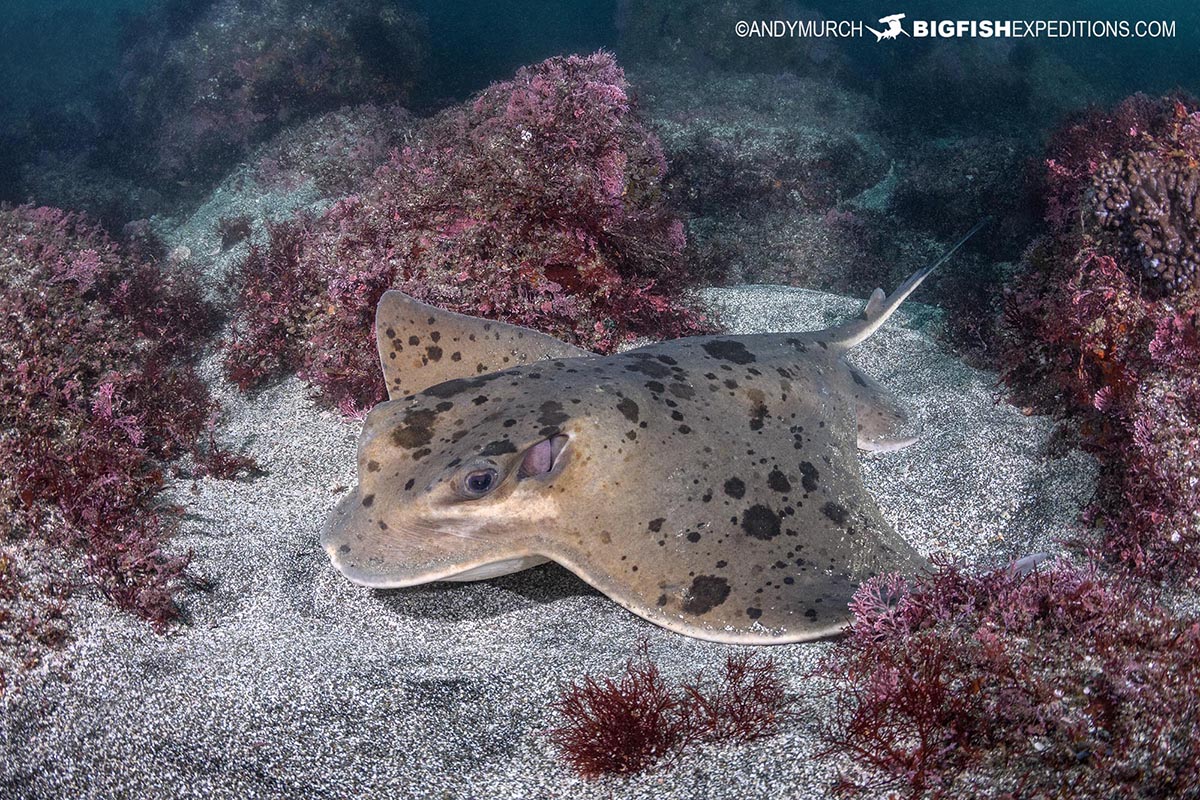
Japanese Angelsharks
If you’ve never seen an angelshark (most divers haven’t) you need to dive on the south side of Honshu Island in the winter. Its not just the amount of angelshark sighting that will impress you, they gorgeous snowflake markings on their backs and they are ideal photography subjects because its in their nature to sit still and hope you can’t see them.
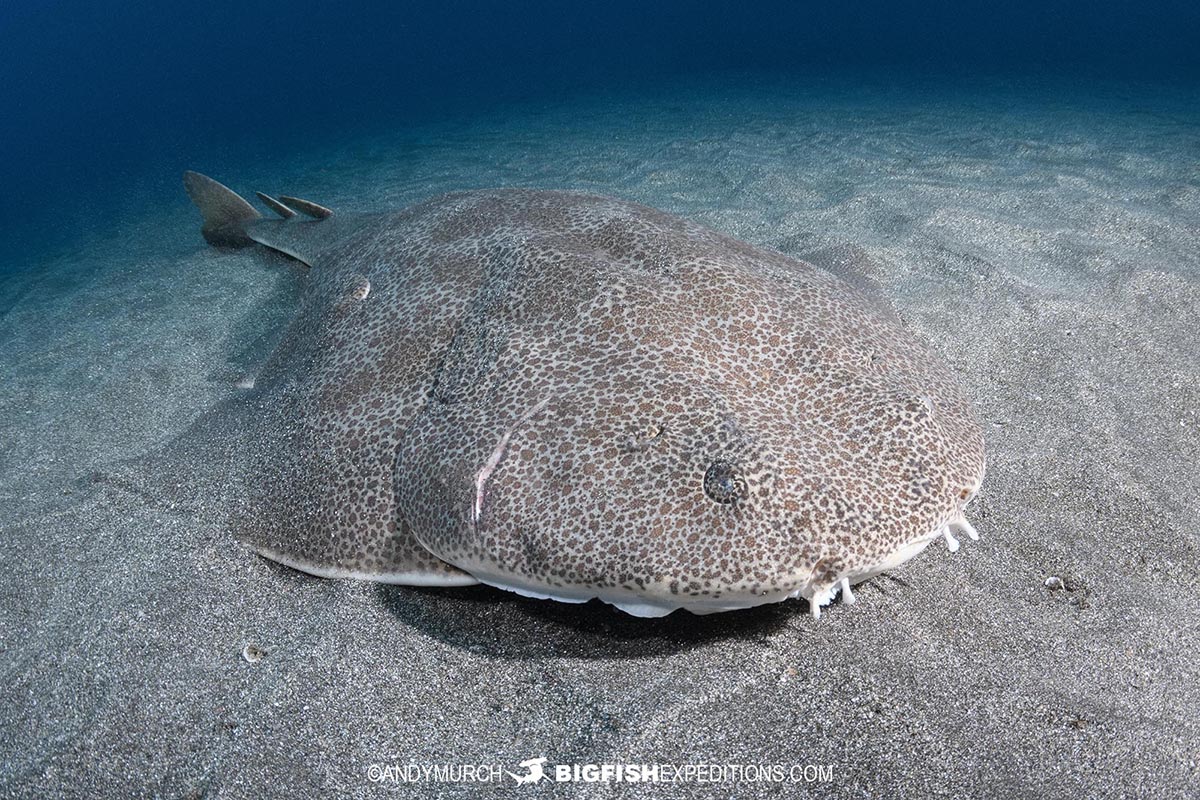
Sepia Stingrays aka Oriental Stingarees
Probably no one but me would make the pilgrimage to Japan just to see this cute little ray, but sepia singrays are an interesting addition to Japan’s elasmo-diversity because all other stingarees live in the southern hemisphere; mostly around Australia. How these ones made it to Japan I have no idea, but when I see one I always point it out to our guests. They’re quite easy to ID because they have a rounded caudal fin on the end of their tail, whereas the other Japanese stingrays have long filamentous tails.
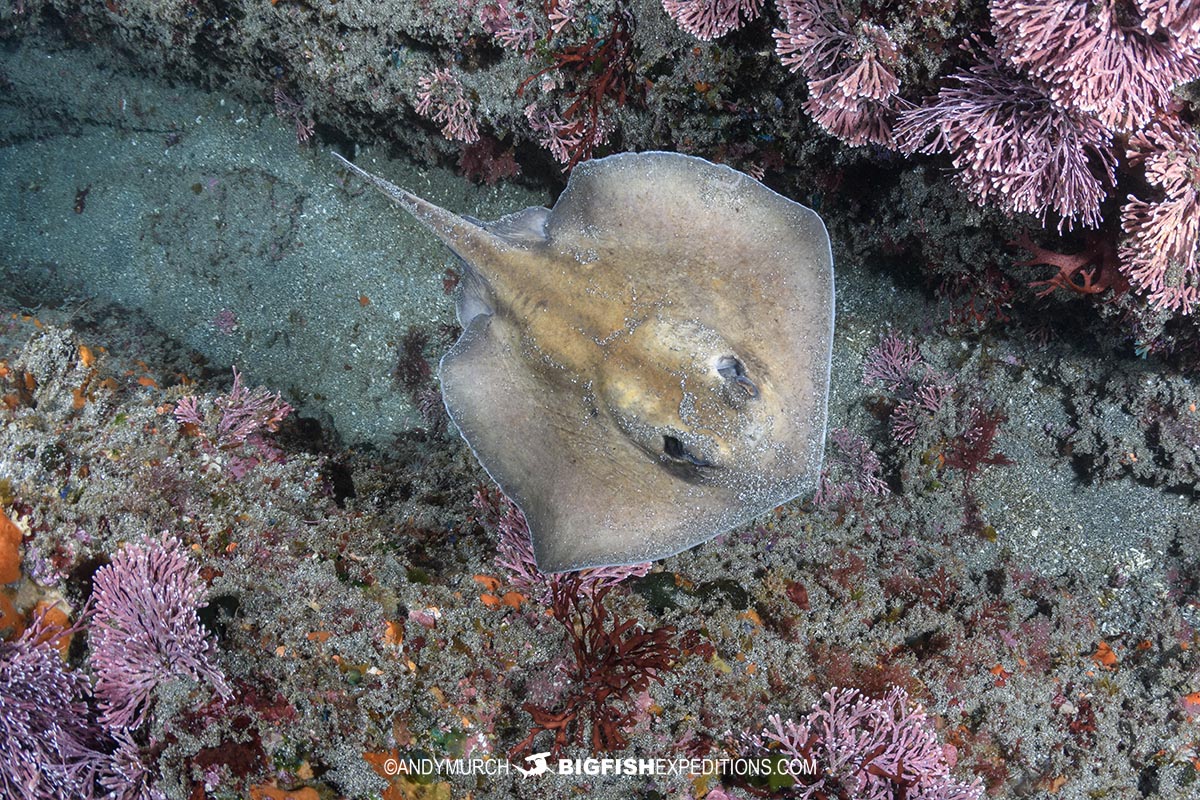
Clouded Angelshark
Although that was the official species list for this year’s shark safari, I have to mention two more awesome endemic sharks that I personally encountered this year in Japan.
The week before our guest trip I was working with a film crew in the same area that we run our guest trips and we ran into an enormous and very rare Clouded Angelshark. I have searched for this elusive shark on many trips so this was a very exciting encounter!
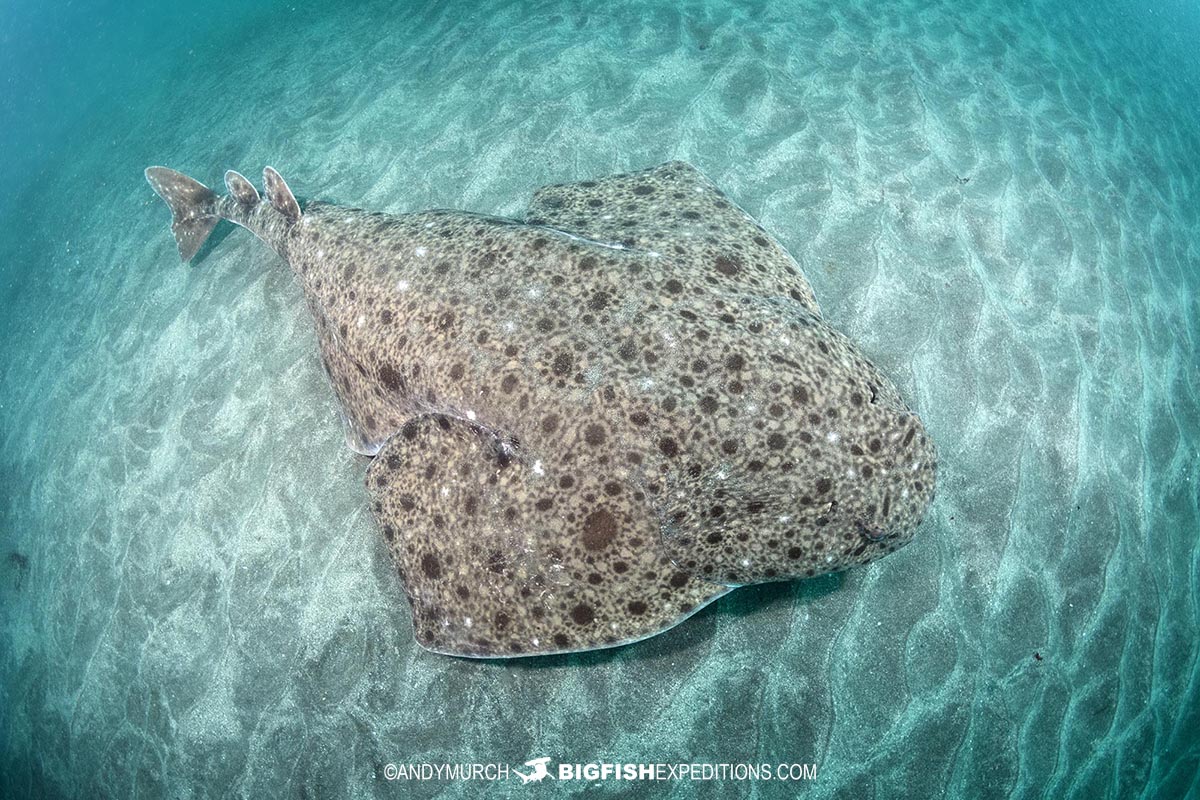
Graceful Catshark
The other species I found this year was on a side trip to Shikoku Island (west of Honshu) that I put together specifically to look for this shark. The graceful catshark is a deep water species that is rarely seen by divers, but in the middle of winter it sometimes rises to 40m and that’s where I saw it.
I mention this because I often put together a side-trip during my shark safaris, so if you have the time and interest to hunt for a more species, ask me where I’m heading!
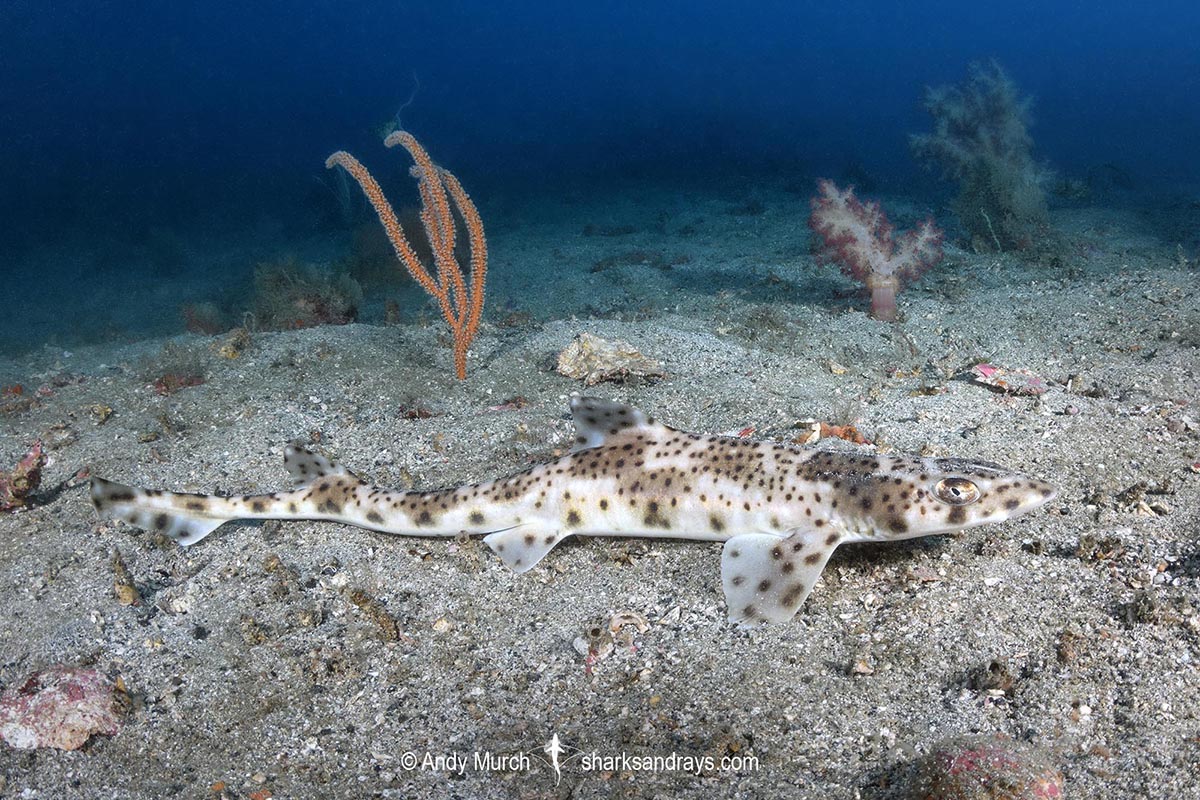
2025 Japanese Shark Diving Expedition
All told, it was another fantastic year in Japan. I can’t wait to return next April. If you want to see a huge selection of exotic sharks and rays that you have never seen before, I hope you can join me there: Japanese Shark Diving 2025
